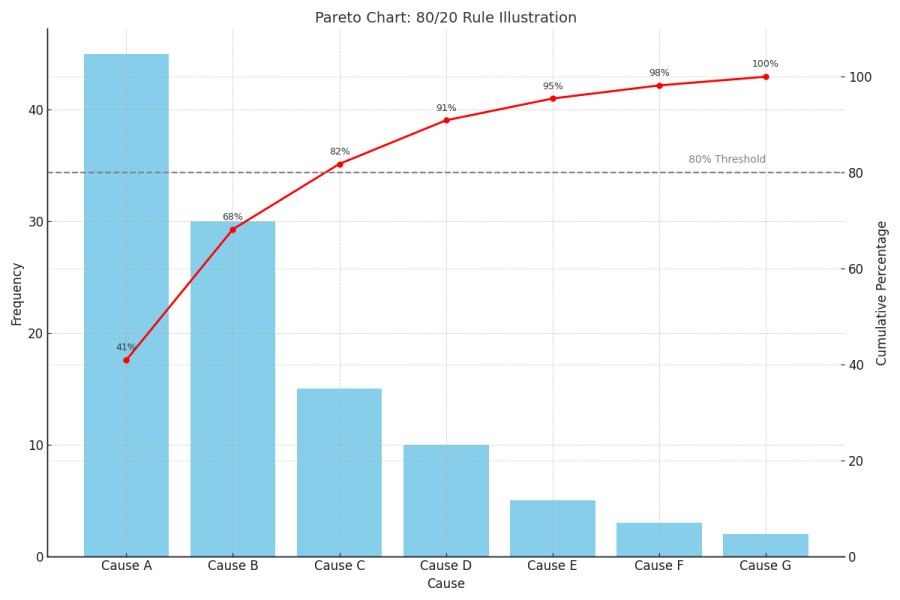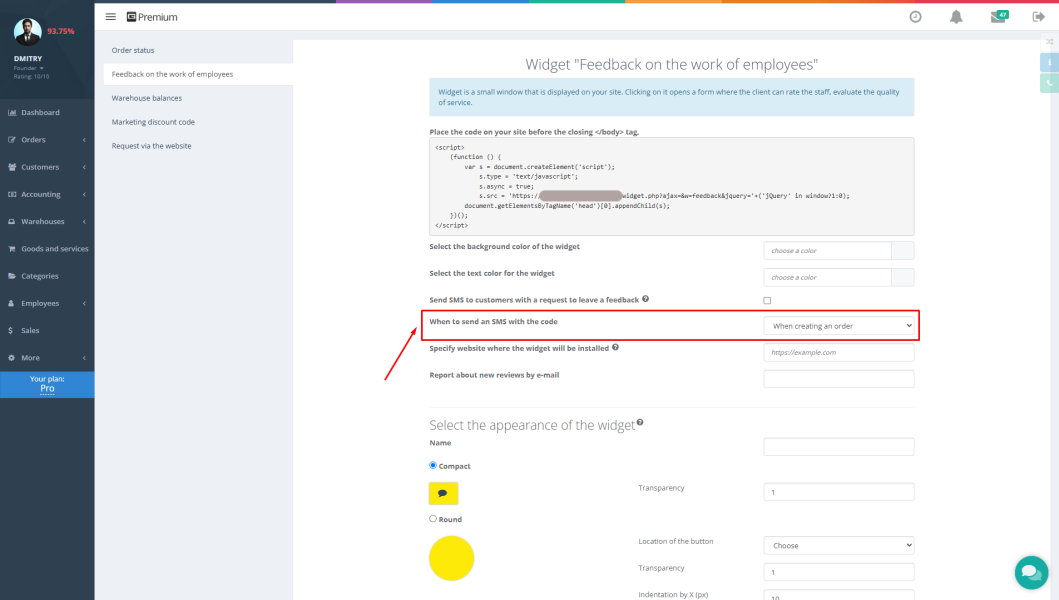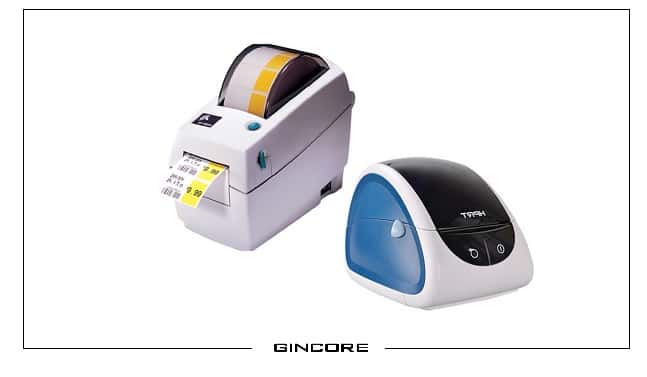Haben Sie manchmal das Gefühl, in einer Flut von To-Do-Listen zu ertrinken, während die wirklich wichtigen Aufgaben unberührt bleiben? Oder stecken Sie vielleicht viel Energie in Ihr Unternehmen und fragen sich, welche Ihrer Bemühungen wirklich den Unterschied machen? Wenn Ihnen das bekannt vorkommt, dann könnte das Verständnis und die Anwendung des 80/20-Prinzips im Geschäftsleben der entscheidende Wendepunkt sein, nach dem Sie gesucht haben. Dies ist nicht nur eine eingängige Phrase; es ist eine kraftvolle Beobachtung mit tiefgreifenden Auswirkungen darauf, wie wir arbeiten, Unternehmen führen und sogar unser Leben gestalten.
Dieser umfassende Leitfaden wird nicht nur die Tiefen dieses Prinzips erforschen, sondern auch umsetzbare Strategien aufzeigen, um es für transformatives Wachstum und Effizienz zu nutzen.
Was ist das 80/20-Prinzip (Pareto-Prinzip)?
Das 80/20-Prinzip, auch bekannt als Pareto-Prinzip, Gesetz der wichtigen Wenigen oder Prinzip der Faktorsparsamkeit, besagt, dass bei vielen Ereignissen etwa 80 % der Auswirkungen auf 20 % der Ursachen zurückzuführen sind.
Die Kernidee: Ungleiche Verteilung
Im Kern ist das Pareto-Prinzip eine Beobachtung über ungleiche Verteilung. Es legt nahe, dass Inputs und Outputs, Ursachen und Wirkungen, Bemühungen und Ergebnisse selten gleichmäßig verteilt sind. Stattdessen trägt oft ein kleiner Prozentsatz von Faktoren zu einem unverhältnismäßig großen Prozentsatz der Ergebnisse bei.
Kernaussage: Es geht nicht immer darum, härter zu arbeiten, sondern intelligenter, indem man die entscheidenden 20 % identifiziert und sich darauf konzentriert. Dies ist kein strenges mathematisches Gesetz, sondern eine aussagekräftige empirische Beobachtung, die in verschiedenen Bereichen gemacht wird. Die tatsächlichen Zahlen können variieren (z. B. 70/30, 95/5), aber das Kernkonzept eines signifikanten Ungleichgewichts bleibt bestehen.
Der Ursprung: Vilfredo Pareto und Dr. Joseph Juran
Das Prinzip hat seinen Namen vom italienischen Ökonomen Vilfredo Pareto (1848-1923). Im Jahr 1896 beobachtete Pareto, dass etwa 80 % des Bodens in Italien im Besitz von 20 % der Bevölkerung waren. Ähnliche Muster fielen ihm auch in anderen Bereichen auf, wie beispielsweise bei den Ernteerträgen in seinem Garten.
Während Pareto das Muster identifizierte, war es Dr. Joseph M. Juran, ein Managementberater und Pionier der Qualitätskontrolle im 20. Jahrhundert, der seine Anwendung in Wirtschaft und Management populär machte. In den 1940er Jahren wandte Juran die 80/20-Regel auf die Qualitätskontrolle an und stellte fest, dass 80 % der Produktfehler typischerweise auf 20 % der Produktionsprobleme zurückzuführen waren. Er nannte dieses Konzept die "wenigen Wichtigen und die vielen Unwichtigen" (oder "vielen Nützlichen") und betonte die Notwendigkeit, sich auf die wenigen kritischen Faktoren zu konzentrieren, um signifikante Verbesserungen zu erzielen.
"Die wenigen Wichtigen und die vielen Unwichtigen."
Warum die 80/20-Regel in der heutigen Geschäftswelt so entscheidend ist
In einer Ära der Informationsüberflutung und ständigen Anforderungen ist die Fähigkeit, effektiv zu priorisieren, von größter Bedeutung. Die 80/20-Regel bietet einen Rahmen für:
- Verbesserten Fokus: Lenkung von Aufmerksamkeit und Ressourcen auf Aktivitäten, die die signifikantesten Ergebnisse liefern.
- Gesteigerte Effizienz: Reduzierung von verschwendetem Aufwand für Aufgaben mit geringer Wirkung.
- Verbesserte Produktivität: Mehr erreichen mit weniger Aufwand durch Optimierung der Inputs.
- Bessere Ressourcenallokation: Klügere Entscheidungen darüber treffen, wo Zeit, Geld und Arbeitskräfte investiert werden sollen.
- Strategische Problemlösung: Identifizierung der Hauptursachen für größere Probleme, anstatt sich in kleineren zu verzetteln.
Durch das Verständnis dieses Prinzips können Unternehmen den Lärm durchdringen und sich auf das konzentrieren, was wirklich Wachstum und Rentabilität antreibt.
Ihre "Vital Few" identifizieren: So führen Sie eine Pareto-Analyse durch
Die praktische Anwendung der 80/20-Regel beinhaltet oft eine Pareto-Analyse. Dies ist eine einfache Technik, um die wichtigsten Faktoren in einer gegebenen Situation zu identifizieren.

Schritt-für-Schritt-Anleitung zur Pareto-Analyse
Hier ist ein strukturierter Ansatz zur Durchführung einer Pareto-Analyse:
- Probleme/Ursachen identifizieren und auflisten: Was versuchen Sie zu analysieren? Listen Sie alle relevanten Faktoren auf (z. B. Quellen von Kundenbeschwerden, Verkäufe nach Produkt, Gründe für Projektverzögerungen).
- Standard-Maßeinheit wählen: Wählen Sie eine konsistente Metrik für den Vergleich (z. B. Häufigkeit, Kosten, Zeit, Anzahl der Vorkommnisse).
- Zeitraum definieren: Legen Sie den Zeitrahmen für die Datenerfassung fest (z. B. eine Woche, ein Monat, ein Quartal).
- Daten sammeln: Erfassen Sie Daten für jede Kategorie basierend auf Ihrer gewählten Metrik und Ihrem Zeitraum. Stellen Sie die Datengenauigkeit sicher.
- Kategorien einstufen: Sortieren Sie die Kategorien von der größten bis zur kleinsten Auswirkung basierend auf Ihren gesammelten Daten.
- Prozentsätze berechnen: Berechnen Sie für jede Kategorie ihren prozentualen Anteil am Gesamten.
- Kumulativen Prozentsatz berechnen: Beginnen Sie mit der größten Kategorie und summieren Sie die Prozentsätze kumulativ. Die letzte Kategorie sollte 100 % erreichen.
- Pareto-Diagramm erstellen (Optional, aber empfohlen): Erstellen Sie ein Balkendiagramm mit Kategorien auf der x-Achse (von höchster zu niedrigster geordnet) und der Maßeinheit auf der y-Achse. Fügen Sie ein Liniendiagramm hinzu, das den kumulativen Prozentsatz darstellt.
| Schritt | Aktion | Beschreibung/Details | Wichtige Überlegungen/Tipps |
|---|---|---|---|
| 1. Kategorien definieren | Elemente/Probleme nach gemeinsamen Merkmalen gruppieren. | Z.B. Fehlerarten, Beschwerdequellen, Kostenpunkte. | Kategorien sollten klar definiert, sich gegenseitig ausschließend und insgesamt vollständig sein. |
| 2. Metrik auswählen | Bestimmen, wie die Auswirkung jeder Kategorie gemessen wird. | Z.B. Anzahl der Vorkommnisse, Kosten, Zeitaufwand. | Metrik sollte relevant und leicht messbar sein. |
| 3. Zeitraum festlegen | Den Zeitraum für die Datenerfassung definieren. | Z.B. Woche, Monat, Quartal. | Der Zeitraum sollte für repräsentative Daten ausreichend sein. |
| 4. Daten sammeln | Daten für jede Kategorie gemäß Metrik und Zeitraum sammeln. | Genauigkeit und Vollständigkeit sicherstellen. | Datenintegrität ist entscheidend. |
| 5. Kategoriensummen bilden | Die Metrikwerte für jede Kategorie summieren. | Einfache Summierung. | Berechnungen überprüfen. |
| 6. Kategorien einstufen | Kategorien nach ihren Gesamtwerten absteigend sortieren. | Dies ist der Schlüssel zur Identifizierung der "wenigen Wichtigen". | Vom wichtigsten zum unwichtigsten. |
| 7. Prozentsätze berechnen | Für jede Kategorie ihren Anteil am Gesamtwert ermitteln. | Z.B. % der Fehler von den Gesamtfehlern. | (Kategoriensumme / Gesamtsumme) * 100. |
| 8. Kumulativen % berechnen | Prozentsätze nacheinander summieren, beginnend mit dem größten. | Die letzte Kategorie sollte insgesamt 100 % ergeben. | Hilft, die 80 %-Grenze zu identifizieren. |
| 9. Diagramm erstellen (Optional) | Ein Balkendiagramm für Werte und eine Linie für den kumulativen % erstellen. | Balken absteigend; Linie hilft, die ~80 %-Grenze zu visualisieren. | Visuelle Darstellung fördert das Verständnis. |
| 10. Diagramm analysieren | Die "wenigen Wichtigen" identifizieren, die am meisten beitragen (bis zu ~80 % kumulativ). | Bemühungen hierauf konzentrieren. Weitere Analysen können für Ursachen erforderlich sein. | Schritt der Entscheidungsfindung. |
Pareto-Diagramme für handlungsorientierte Erkenntnisse interpretieren
Ein Pareto-Diagramm hebt die "wenigen Wichtigen" visuell hervor. Die höchsten Balken auf der linken Seite stellen die bedeutendsten Faktoren dar. Die kumulative Prozentlinie hilft Ihnen zu sehen, wo die 80 %-Marke (oder ein ähnlicher Wert) erreicht wird. Dies sind die Bereiche, in denen die Konzentration Ihrer Bemühungen den größten Ertrag bringt.
Okay, wir haben also das 'Was' und 'Warum' geklärt. Aber wie spielt sich dieses faszinierende Prinzip tatsächlich in der realen Geschäftswelt ab? Sie werden vielleicht überrascht sein!
Die 80/20-Regel in der Wirtschaft: Praxisnahe Anwendungen & Beispiele
Die Vielseitigkeit des Pareto-Prinzips ermöglicht seine Anwendung in zahlreichen Geschäftsfunktionen:
Umsatzoptimierung: Konzentration auf hochwertige Kunden
- Beobachtung: Oft stammen 80 % des Umsatzes von 20 % der Kunden.
- Maßnahme: Identifizieren Sie diese Top-Kunden. Pflegen Sie diese Beziehungen durch engagiertes Account Management, Treueprogramme und personalisierte Angebote. Analysieren Sie, was sie hochwertig macht, und suchen Sie nach ähnlichen potenziellen Kunden.
- Beispiel: Ein Softwareunternehmen stellt fest, dass 15 % seiner Unternehmenskunden 75 % seines jährlich wiederkehrenden Umsatzes generieren. Es beschließt, diesen Kunden leitende Account Manager zuzuweisen und ein exklusives vierteljährliches Webinar mit Einblicken für sie zu entwickeln.
Marketingeffektivität: ROI-Maximierung mit zielgerichteten Strategien
- Beobachtung: Typischerweise generieren 20 % der Marketingkanäle oder -kampagnen 80 % der Leads oder Conversions.
- Maßnahme: Analysieren Sie die Kampagnenleistung. Setzen Sie verstärkt auf die effektivsten Kanäle und Botschaften. Optimieren Sie Inhalte, die bei Ihren hochwertigen Zielgruppensegmenten am besten ankommen.
- Beispiel: Ein E-Commerce-Shop entdeckt, dass sein organischer Suchverkehr und E-Mail-Marketing (2 Kanäle) 82 % seiner Verkäufe generieren, während bezahlte Social-Media-Anzeigen (mehrere Plattformen) trotz erheblicher Ausgaben nur 10 % beitragen. Er verteilt das Budget zugunsten von SEO und dem Ausbau der E-Mail-Liste neu.

Produktivität & Zeitmanagement: Mehr erreichen durch weniger (Unwichtiges) tun
- Beobachtung: 20 % Ihrer Aufgaben oder Aktivitäten machen in der Regel 80 % Ihrer wertvollen Ergebnisse aus.
- Maßnahme: Identifizieren Sie zu Beginn jedes Tages oder jeder Woche die wenigen kritischen Aufgaben, die den größten Einfluss haben werden. Priorisieren Sie diese und erledigen Sie sie zuerst. Delegieren oder eliminieren Sie Aufgaben mit geringem Wert.
- Zitat:
(Obwohl nicht direkt von Pareto, passt es zum Geist der Konzentration auf Wichtigkeit statt bloßer Aktivität)."Was wichtig ist, ist selten dringend, und was dringend ist, ist selten wichtig."
Betrieb & Qualitätskontrolle: Prozesse optimieren und Fehler reduzieren
- Beobachtung: 80 % der Produktionsfehler oder Betriebsverzögerungen sind oft auf 20 % der Ursachen oder Prozessschritte zurückzuführen.
- Maßnahme: Nutzen Sie die Pareto-Analyse, um diese kritischen Ursachen oder Engpässe zu lokalisieren. Konzentrieren Sie Verbesserungsbemühungen (wie Kaizen oder Six Sigma) auf diese Bereiche, um maximale Auswirkungen auf Qualität und Effizienz zu erzielen.
- Beispiel: Ein Produktionswerk stellt fest, dass zwei spezifische Maschinenstörungen (von zehn Arten) für 78 % der Produktionslinienstillstände verantwortlich sind. Es priorisiert eine umfassende Überholung und einen präventiven Wartungsplan für diese beiden Maschinen.
Produktentwicklung: Features entwickeln, die wirklich zählen
- Beobachtung: Nutzer verwenden oft 20 % der Funktionen eines Produkts 80 % der Zeit.
- Maßnahme: Konzentrieren Sie Entwicklungsressourcen auf die Verfeinerung und Verbesserung dieser Kernfunktionen mit hoher Nutzung. Seien Sie vorsichtig bei "Feature Creep" – dem Hinzufügen zahlreicher Funktionen mit geringer Auswirkung, die das Produkt aufblähen und Benutzer verwirren können. Priorisieren Sie die Behebung der 20 % der Fehler, die 80 % der Benutzerprobleme verursachen.
- Beispiel: Ein Team für mobile Apps analysiert Nutzungsdaten und stellt fest, dass Benutzer die meiste Zeit mit drei Schlüsselfunktionen verbringen. Sie beschließen, die Navigation zu diesen Funktionen zu vereinfachen und in deren Robustheit und Benutzerfreundlichkeit zu investieren, anstatt fünf neue, weniger gefragte Funktionen hinzuzufügen.
Exzellenter Kundenservice: Wichtige Schwachstellen angehen
- Beobachtung: 80 % der Kundenbeschwerden oder Unzufriedenheit entstehen oft durch 20 % der Produkt-/Dienstleistungsprobleme oder Prozessstörungen.
- Maßnahme: Analysieren Sie Beschwerdedaten, um diese wiederkehrenden, folgenreichen Probleme zu identifizieren. Priorisieren Sie die Lösung dieser Ursachen, um die allgemeine Kundenzufriedenheit und -loyalität erheblich zu verbessern.
- Beispiel: Ein Telekommunikationsunternehmen stellt fest, dass 80 % der Kundenbeschwerden auf Abrechnungsfehler und unerwartete Gebühren (zwei Hauptprobleme) zurückzuführen sind. Es überarbeitet sein Abrechnungssystem und verbessert die Transparenz seiner Preiskommunikation.
Personalwesen: Talente nutzen und Kernprobleme lösen
- Beobachtung: 20 % der Mitarbeiter können 80 % der Ergebnisse oder Innovationen generieren. Umgekehrt könnten 20 % der HR-Probleme 80 % der Mitarbeiterunzufriedenheit oder -fluktuation verursachen.
- Maßnahme: Identifizieren Sie Top-Performer: Verstehen Sie ihre Erfolgsfaktoren, belohnen Sie sie und prüfen Sie, wie ihre Praktiken repliziert werden können. Beheben Sie systemische Probleme, die die meisten Probleme für die breitere Belegschaft verursachen.
- Beispiel: Ein Unternehmen stellt fest, dass eine kleine Gruppe von Vertriebsmitarbeitern die Ziele konstant übertrifft. HR und Vertriebsleitung untersuchen deren Techniken, Kundeninteraktionsstile und Produkttiefenwissen, um ein neues Schulungsprogramm für das gesamte Vertriebsteam zu entwickeln.
Kostenreduzierungsstrategien: Hauptkostentreiber identifizieren
- Beobachtung: Etwa 20 % der Kostenkategorien machen oft 80 % der Gesamtkosten aus.
- Maßnahme: Analysieren Sie die Ausgaben. Konzentrieren Sie Kostensenkungsbemühungen auf diese Hauptkostenbereiche für signifikante Einsparungen, anstatt kleine, weniger wirkungsvolle Kürzungen über alle Bereiche vorzunehmen.
- Beispiel: Ein Einzelhandelsunternehmen stellt fest, dass die Lagerhaltungskosten für seine langsam drehenden 20 % der Artikel (die 80 % ihrer Lagerkosten für diese Artikel ausmachen) unverhältnismäßig hoch sind. Es implementiert Strategien, um diesen langsam drehenden Bestand zu reduzieren und seinen Einkauf für schnell drehende Artikel zu optimieren.
Gincore optimal nutzen: Die 80/20-Regel mit intelligenten Business-Tools anwenden
Seien wir ehrlich, das Verständnis der 80/20-Regel ist der einfache Teil. Die wahre Herausforderung? Sie konsequent inmitten des täglichen Chaos der Unternehmensführung anzuwenden. Hier kann ein intelligenter Verbündeter, wie Business-Management-Tools wie Gincore, von unschätzbarem Wert werden. Durch die Automatisierung von Prozessen, die Bereitstellung klarer Dateneinblicke und die Zentralisierung von Abläufen kann Gincore Ihnen helfen, Ihre "wenigen Wichtigen" zu identifizieren und sich darauf zu konzentrieren.
Das Pareto-Prinzip im Privatleben: Jenseits des Geschäfts
Die 80/20-Regel ist nicht auf den Sitzungssaal beschränkt. Sie hat auch im Privatleben wirkungsvolle Anwendungen:
Persönliche Produktivität und Zielerreichung
- Identifizieren Sie Ihre wirkungsvollsten Aktivitäten: Welche 20 % Ihrer täglichen Gewohnheiten oder Aufgaben tragen zu 80 % Ihres Glücks, Ihrer Gesundheit oder Ihres Fortschritts bei persönlichen Zielen bei? Konzentrieren Sie sich auf diese.
- Lernen: 20 % des Lernmaterials oder -aufwands könnten 80 % Ihres Verständnisses oder Ihrer Prüfungsergebnisse ausmachen. Priorisieren Sie Kernkonzepte.
Sinnvolle Beziehungen pflegen
- Wichtige Verbindungen pflegen: Vielleicht bieten 20 % Ihrer Beziehungen 80 % Ihrer persönlichen Unterstützung, Freude und Inspiration. Investieren Sie Ihre begrenzte soziale Energie klug in diese wichtigen Verbindungen.
- Konfliktlösung: In Partnerschaften könnten 80 % der Probleme auf 20 % wiederkehrender Probleme beruhen. Die Auseinandersetzung mit diesen Kernproblemen kann zu erheblichen Verbesserungen führen.

Persönliche Finanzen und Lernen managen
- Finanzen: 20 % Ihrer Ausgabengewohnheiten könnten 80 % Ihrer Gesamtausgaben ausmachen. Diese zu identifizieren und zu managen, kann Ihre finanzielle Gesundheit drastisch verbessern. Ähnlich könnten 20 % Ihrer Investitionen 80 % Ihrer Erträge generieren.
- Fähigkeiten: 20 % der Fähigkeiten in einem bestimmten Bereich könnten 80 % der Zeit genutzt werden oder 80 % der Probleme lösen. Konzentrieren Sie sich darauf, diese Kernkompetenzen zuerst zu meistern.
Häufige Fehlinterpretationen und Fallstricke der 80/20-Regel
Obwohl wirkungsvoll, kann das Pareto-Prinzip missbraucht oder missverstanden werden:
- Der "20 % Aufwand"-Mythos: Die Regel besagt, dass 20 % der Ursachen zu 80 % der Ergebnisse führen, nicht, dass Sie nur 20 % Aufwand für diese wenigen wichtigen Ursachen betreiben müssen. Diese kritischen 20 % erfordern oft 100 % Ihres fokussierten Einsatzes.
- Starre Fixierung auf Zahlen: Hängen Sie sich nicht an dem exakten 80/20-Verhältnis auf. Es ist eine Richtlinie, die ein Ungleichgewicht illustriert, kein unveränderliches Gesetz. Das Verhältnis kann variieren.
- Die "anderen 80 %" komplett ignorieren: Obwohl die "vielen Unwichtigen" weniger wirkungsvoll sind, können sie nicht immer vollständig vernachlässigt werden. Einige dieser Aufgaben könnten notwendige Wartungs- oder Grundlagenarbeiten sein. Ziel ist es, sie zu minimieren, zu delegieren oder zu optimieren, nicht unbedingt alle zu eliminieren, wenn sie einen Zweck erfüllen.
- Statische Anwendung in dynamischen Umgebungen: Was die "wenigen Wichtigen" ausmacht, kann sich im Laufe der Zeit ändern, da sich Marktbedingungen, Kundenpräferenzen oder Geschäftsziele entwickeln. Eine regelmäßige Neubewertung ist entscheidend.
- Übermäßige Vereinfachung komplexer Sachverhalte: Einige Probleme haben vielschichtige, miteinander verbundene Ursachen, die nicht ohne Verlust wichtiger Nuancen auf eine einfache 80/20-Aufteilung reduziert werden können.
- Fokus auf Häufigkeit statt Schweregrad: Die Priorisierung häufig auftretender kleinerer Probleme bei gleichzeitiger Ignorierung seltener, aber kritischer Probleme kann ein Fehler sein.
Expertentipps für eine effektive Umsetzung
Um die Vorteile der 80/20-Regel zu maximieren:
- Seien Sie datengesteuert: Basieren Sie Ihre Analyse auf tatsächlichen Daten, nicht auf Annahmen oder Bauchgefühl.
- Regelmäßig überprüfen und anpassen: Bewerten Sie Ihre Prioritäten regelmäßig neu. Die "wenigen Wichtigen" können sich ändern.
- Lernen Sie, "Nein" zu sagen: Fokus erfordert das Ablehnen oder Depriorisieren von Aufgaben und Möglichkeiten, die außerhalb Ihrer kritischen 20 % liegen.
- Verstehen Sie, warum die 20 % erfolgreich sind: Identifizieren Sie nicht nur Top-Performer oder -Produkte; analysieren Sie die Gründe für ihren Erfolg und versuchen Sie, diese Faktoren zu replizieren.
- Nutzen Sie Pareto-Diagramme zur Kommunikation: Visuelle Werkzeuge können Prioritäten effektiv an Ihr Team und Ihre Stakeholder kommunizieren.
- Iterieren: Wenden Sie bei komplexen Problemen die Pareto-Analyse schichtweise an. Lösen Sie die obersten 20 %, dann analysieren Sie neu.
| Ratschlagskategorie | Spezifische Empfehlung | Begründung/Nutzen |
|---|---|---|
| Datenanalyse | Entscheidungen auf Fakten basieren, nicht auf Intuition. | Sorgt für Objektivität bei der Identifizierung der "wenigen Wichtigen". |
| Datenanalyse | Regelmäßig relevante Daten sammeln und analysieren. | Ermöglicht das Verfolgen von Änderungen und die Anpassung der Strategie. |
| Priorisierung & Fokus | Die "wenigen Wichtigen" Aufgaben/Kunden/Produkte klar definieren. | Konzentriert Ressourcen für maximale Wirkung. |
| Priorisierung & Fokus | Lernen, "Nein" zu Aufgaben und Ablenkungen mit geringer Wirkung zu sagen. | Bewahrt den Fokus auf Prioritäten. |
| Kontinuierliche Verbesserung | 80/20-Prioritäten regelmäßig überprüfen und anpassen. | Hält das Prinzip in dynamischen Umgebungen relevant. |
| Kontinuierliche Verbesserung | Analysieren, warum die Top 20 % erfolgreich sind. | Ermöglicht die Replikation von Erfolgen und die Verbesserung weniger effektiver Elemente. |
| Prozessansatz | Die 20 % der Schlüsselprozesse identifizieren und dokumentieren, die 80 % der Ergebnisse generieren. | Vereinfacht Standardisierung, Schulung und Optimierung. |
| Iterative Anwendung | Bei komplexen Problemen die Pareto-Analyse schichtweise anwenden. | Ermöglicht eine schrittweise, fokussierte Lösung signifikanter Komponenten. |
| Visualisierung & Komm. | Pareto-Diagramme zur Darstellung von Daten und Begründung von Prioritäten verwenden. | Erleichtert Verständnis und Entscheidungsfindung. |
Häufig gestellte Fragen (FAQ) zur 80/20-Regel
F1: Ist die 80/20-Regel immer genau 80 % und 20 %?
A: Nein, das Verhältnis ist eine Annäherung. Es könnte 70/30, 90/10 oder eine andere Variation sein. Die Schlüsselerkenntnis ist das Ungleichgewicht: Eine Minderheit der Inputs führt oft zu einer Mehrheit der Outputs.
F2: Kann die 80/20-Regel auf jede Branche oder Situation angewendet werden?
A: Sie ist überraschend vielseitig und wurde in unzähligen Bereichen beobachtet, von Wirtschaft und Ökonomie bis hin zu persönlichen Gewohnheiten und Naturphänomenen. Es handelt sich jedoch um eine Richtlinie, nicht um ein universelles Gesetz, daher ist kritisches Denken immer erforderlich.
F3: Wie oft sollte ich eine Pareto-Analyse durchführen?
A: Das hängt von der Dynamik Ihrer Umgebung ab. Für sich schnell ändernde Bereiche wie Marketingkampagnen oder Technologieprojekte können häufigere Überprüfungen (z. B. vierteljährlich oder monatlich) erforderlich sein. Für stabilere Bereiche könnte jährlich oder halbjährlich ausreichen.
F4: Was ist, wenn ich mich auf die 20 % konzentriere und wichtige grundlegende Aufgaben in den 80 % vernachlässige?
A: Ziel ist nicht die pauschale Vernachlässigung der "anderen 80 %". Es geht darum, ihre geringere direkte Auswirkung zu erkennen und Wege zu finden, sie effizienter zu managen – durch Automatisierung, Delegation, Vereinfachung oder strategisch minimale Aufmerksamkeit – damit Sie Ihre Hauptenergie den wenigen Wichtigen widmen können.
F5: Wie kann ich Managementprozesse automatisieren, um die 80/20-Regel besser anzuwenden?
A: Tools wie Gincore sind dafür konzipiert. Durch die Automatisierung von Routineabläufen, die Zentralisierung von Kundendaten, die Optimierung des Aufgabenmanagements und die Bereitstellung klarer Leistungsberichte hilft Ihnen Gincore, Ihre wertvollsten Aktivitäten (die 20 %) zu identifizieren und den Zeitaufwand für weniger wirkungsvolle (die 80 %) zu reduzieren. Dies ermöglicht es Ihnen und Ihrem Team, sich auf strategisches Wachstum und hochwertige Kundeninteraktionen zu konzentrieren.
F6: Wo kann ich mehr über das Pareto-Prinzip erfahren?
A: Wichtige Ressourcen sind Bücher von Richard Koch (wie "Das 80/20-Prinzip") und Arbeiten im Zusammenhang mit Dr. Joseph Juran für Anwendungen im Qualitätsmanagement. Seriöse Wirtschaftspublikationen und akademische Datenbanken bieten ebenfalls Einblicke.
Fazit: Nutzen Sie die Kraft des Fokus
Das 80/20-Prinzip ist mehr als nur eine interessante Beobachtung; es ist ein praktisches Werkzeug für radikale Transformationen im Geschäfts- und Privatleben. Indem Sie konsequent Ihre "wenigen Wichtigen" identifizieren und priorisieren, können Sie neue Ebenen der Produktivität, Effizienz und des Erfolgs erschließen. Es fordert uns heraus, nicht einfach mehr zu tun, sondern uns darauf zu konzentrieren, mehr von dem zu tun, was wirklich zählt.
Hier also eine kleine Herausforderung für Sie heute: Nehmen Sie sich einen Moment Zeit, schnappen Sie sich einen Kaffee und denken Sie wirklich darüber nach – was sind Ihre 20 %? Was sind die wenigen wichtigen Dinge in Ihrem Unternehmen oder Leben, die, wenn Sie Ihre fokussierte Energie hineinstecken würden, unglaubliche 80 % Ihrer gewünschten Ergebnisse freisetzen könnten? Die Antwort könnte Sie überraschen, und sie könnte der erste Schritt zu einer fokussierteren, effektiveren und erfüllenderen Reise sein.
Haftungsausschluss: Dieser Artikel bietet einen umfassenden Überblick und praktische Ratschläge. Für spezifische Geschäftsentscheidungen sollten Prinzipien wie die 80/20-Regel immer mit gründlicher Analyse und professionellem Urteilsvermögen kombiniert werden.

.png)








